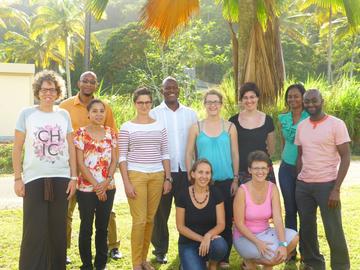ResisT
Project start date:
15/06/2013Project end date:
15/06/2015Objectives
The project intended to establish common approach of surveillance and control of ticks (Tropical Bont Tick [TBT] and Cattle ticks) and tick-borne diseases (heartwater, anaplasmosis and babesiosis) in the Caribbean in the context of emergence of tick resistance to acaricides. More specifically, the project assessed and caracterised resistance of Cattle Ticks (Rhipicephalus [Boophilus] Microplus) to acaricides, strengthened surveillance of tick-borne diseases in the countries and defined innovative integrated tick control strategies with a view to promoting affordable alternatives to animal owners, taking into consideration cost and availability of products in the Caribbean region, and the occurrence of acaricide resistance.
Link with CaribVET
Description
Ticks and Tick-borne diseases have been historically major constraints to the development of livestock in the Caribbean Community (CARICOM) and the wider Caribbean. The use of chemicals to control ticks represents a significant portion of livestock management costs and the build up of chemical resistance by the ticks results in more and more use of these chemicals and increased costs to the animal owners. During the 10-year eradication programmes for TBT, the Caribbean Amblyomma Programme and PoseiDOM, the chemical known as Bayticol (flumethrine) has been intensively used, in both French and CARICOM islands of the Lesser Antilles, and may have created resistance. Strong indicators seem to show that several islands face problems of acaracide efficiency. Resistance phenomena are worth exploring and being diagnosed early in order to slow down the spread of resistance by adoption of proper control measures. Further, with emphasis on the use of sustainable environmental friendly approaches to agriculture, forestry, fisheries and the environment, this project is valuable to the Caribbean.

